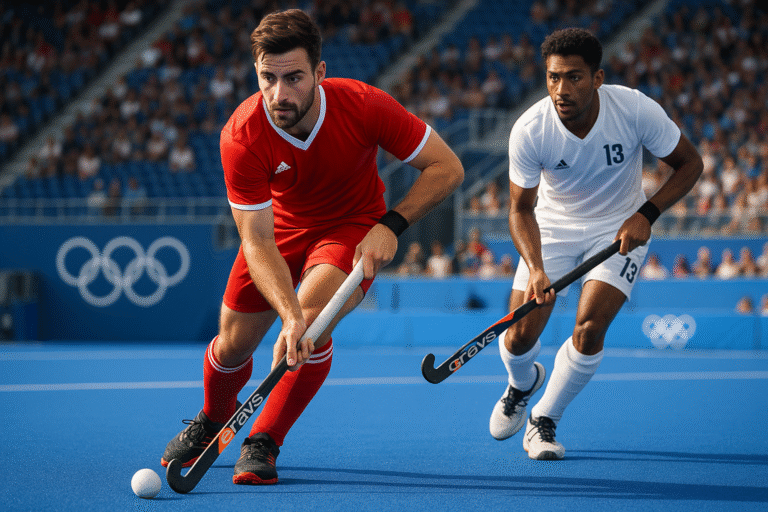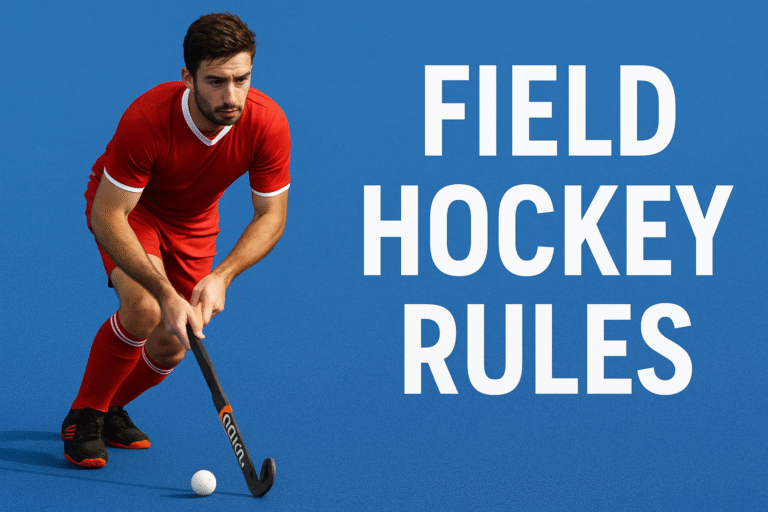Hockey Ball: Everything You Need to Know About the Essential Gear
A hockey ball may seem like a small and simple piece of equipment, but it’s at the heart of the game. Whether you are a beginner or a professional, understanding the hockey ball’s characteristics, types, and the role it plays on the field is essential. In this post, I will dive deep into the hockey ball, offering insights into its various aspects, how it’s made, and its importance in the sport.
What is a Hockey Ball?
A hockey ball is the primary object used to play field hockey, both in competitive matches and casual games. Unlike other sports like soccer or baseball, where players kick or hit a ball that’s soft or inflatable, a hockey ball is hard, round, and compact, designed for precision and speed.
Made from a solid, durable material, a hockey ball ensures consistent performance on various field surfaces. It is this consistency that makes it so essential to the game. Players rely on the ball’s characteristics to execute controlled passes, accurate shots, and flawless dribbles during every match.

Types of Hockey Balls
When you step onto the field, you may notice that not all hockey balls are the same. There are different types designed for different conditions and playing styles. Understanding these variations can help you choose the right ball for your game.
1. Field Hockey Balls
The standard field hockey ball is made from hard plastic or solid composite materials. These balls are typically white or bright in color, making them visible in daylight conditions. They’re designed to provide a high level of bounce, especially on grass or synthetic turf fields.
2. Indoor Hockey Balls
In indoor hockey, the ball is usually softer and slightly smaller than the standard field Wanna explore much more related to Football, Golf, Cricket, and all popular sports?
Visit us today at sportsinfoo.online
. It’s designed for use on indoor surfaces, offering less bounce but better control in the confined space of an indoor court. These balls are often brightly colored, such as orange or green, to improve visibility in artificial lighting.
3. Training Hockey Balls
Training hockey balls are designed with one purpose: to help players improve their skills. These balls are often made from softer materials, making them less harsh on the stick and easier to handle. Training balls can also come with different weights and sizes, which help players develop their touch and precision.
Why is the Hockey Ball Important?
The hockey ball might seem insignificant compared to other pieces of gear, but it plays a crucial role in the game. The ball’s size, weight, and material properties directly affect the game’s flow. Here are a few reasons why the hockey ball is so essential:
1. Speed and Accuracy
The speed at which a hockey ball travels is vital. A lightweight ball with the right material ensures that players can hit it with accuracy, whether they’re aiming for the goal, passing to a teammate, or performing a skillful dribble. The ball’s responsiveness can make the difference between scoring a goal or missing the mark.
2. Durability
A high-quality hockey ball is built to withstand the rough conditions of the game. Whether playing under the blazing sun, on wet grass, or even indoors, the ball needs to stay intact. Its durability ensures that players get consistent performance throughout the game, without worrying about damage or wear.
3. Control and Handling
A properly designed hockey ball allows for better control, which is especially important when dribbling or making quick passes. The smooth surface of the ball and its weight make it easier for players to maintain control while executing complex moves.
How to Choose the Right Hockey Ball
Selecting the right hockey ball is essential for your performance on the field. Here’s a quick guide on how to choose the perfect ball based on your needs:
1. Consider the Playing Surface
- Outdoor Field Hockey: Choose a ball designed for field hockey, typically made of solid plastic or composite material. These are durable and designed for use on grass or synthetic turf.
- Indoor Hockey: Use an indoor-specific ball, which is softer and smaller for better control on indoor surfaces.
2. Check the Weight
- Make sure the ball is the right weight for your level. A standard field hockey ball weighs about 5.5 to 5.75 ounces, but training balls can vary in weight.
3. Opt for Quality
- It’s worth investing in a high-quality hockey ball from reputable brands that specialize in hockey gear. Brands like Grays and Kookaburra offer some of the best balls in the market.
The Future of the Hockey Ball
As technology continues to evolve, so does the equipment used in the game. Hockey ball design is no exception. Manufacturers are constantly researching new materials and designs to improve performance. The future of the hockey ball might involve even more advanced materials, offering enhanced durability, performance, and control for players.
Conclusion
The hockey ball is an essential part of the game that often goes unnoticed, but without it, the sport wouldn’t exist. Its role in ensuring precise, controlled, and exciting gameplay is invaluable. Whether you’re a beginner or a seasoned player, understanding the ball’s types and choosing the right one can make a significant difference in your performance. So, the next time you step onto the field, you’ll appreciate the importance of that small but mighty object the hockey ball.
Wanna explore much more related to Football, Golf, Cricket, and all popular sports?
Visit us today at sportsinfoo.online


